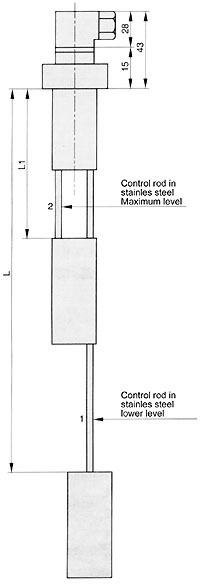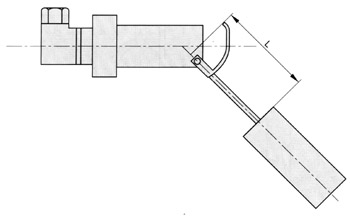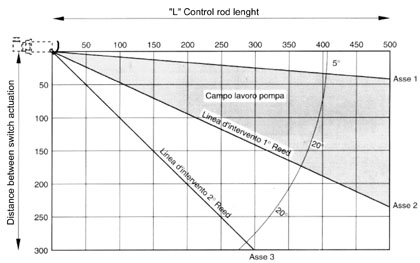code 10.820
The 10.820 series has a head carrying two control
rods and two floats. Each control rod can switch over the signal
from 1 or 2 Reeds (with a simple or switchover contact). For each
control rod, you may choose the most suitable scheme. Therefore,
each head can contain from 2 to 4 Reeds. As a rule, the levels are
supplied along with the control rod of minimum level (1), which
closes the contacts in the absence of liquid and along with the
control rod of maximum level (2) which closes in the presence of
liquid.
If you wish to receive the control rod arranged in a different way,
you will have to specify in your request. For lenghts higler than
500 mm. and for tanks having a strong turbulence, is advised the
reinforced type of levels, that is the 10.800 and the 10.820 R type.
|

|
|
code 10.830
This level, that work sideways,
is suitable for various applications. Like the 10.800 series, it may
as well be used to control the minimum or maximum level as to
control the minimum too empty or maximum and overflowing level.
Unlike the 10.800 series, the distance between the 1st and the 2nd
signal is not fixed, but as an angular value increasing
progressively to the lenght of the pipe. This allow the designer
wide possibilities of choise, in fact, if the "L" lenght
varies, the points of interventions of the 1st and 2nd reed contact
vary too (please read on the axis) 1 and 2.
|
 |
|

|
|